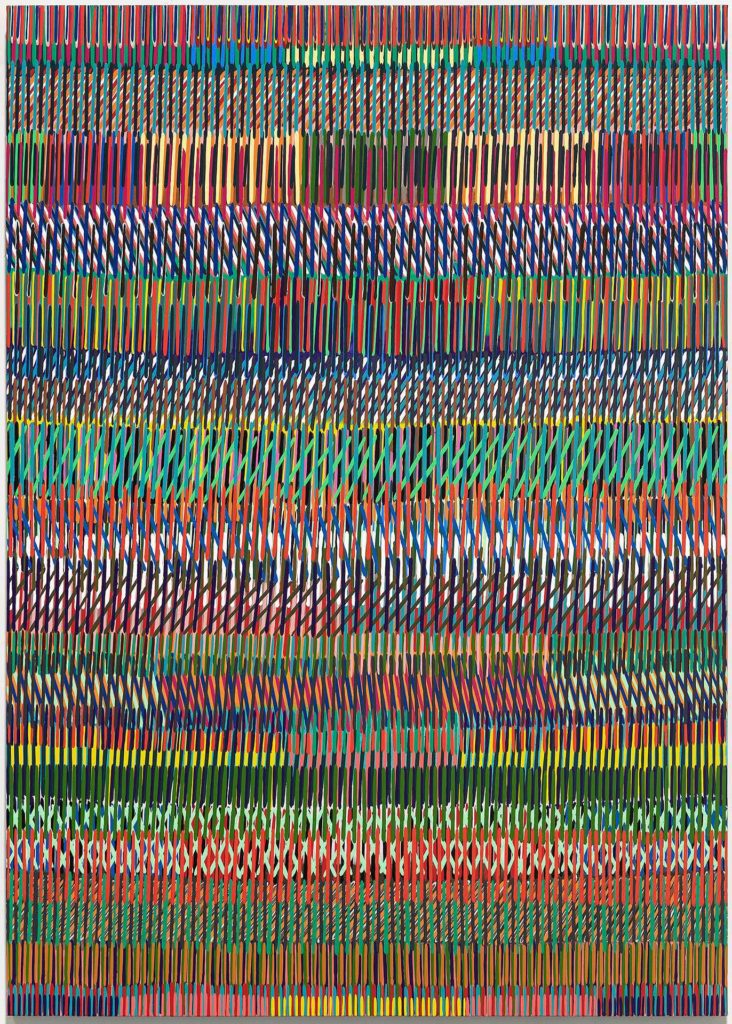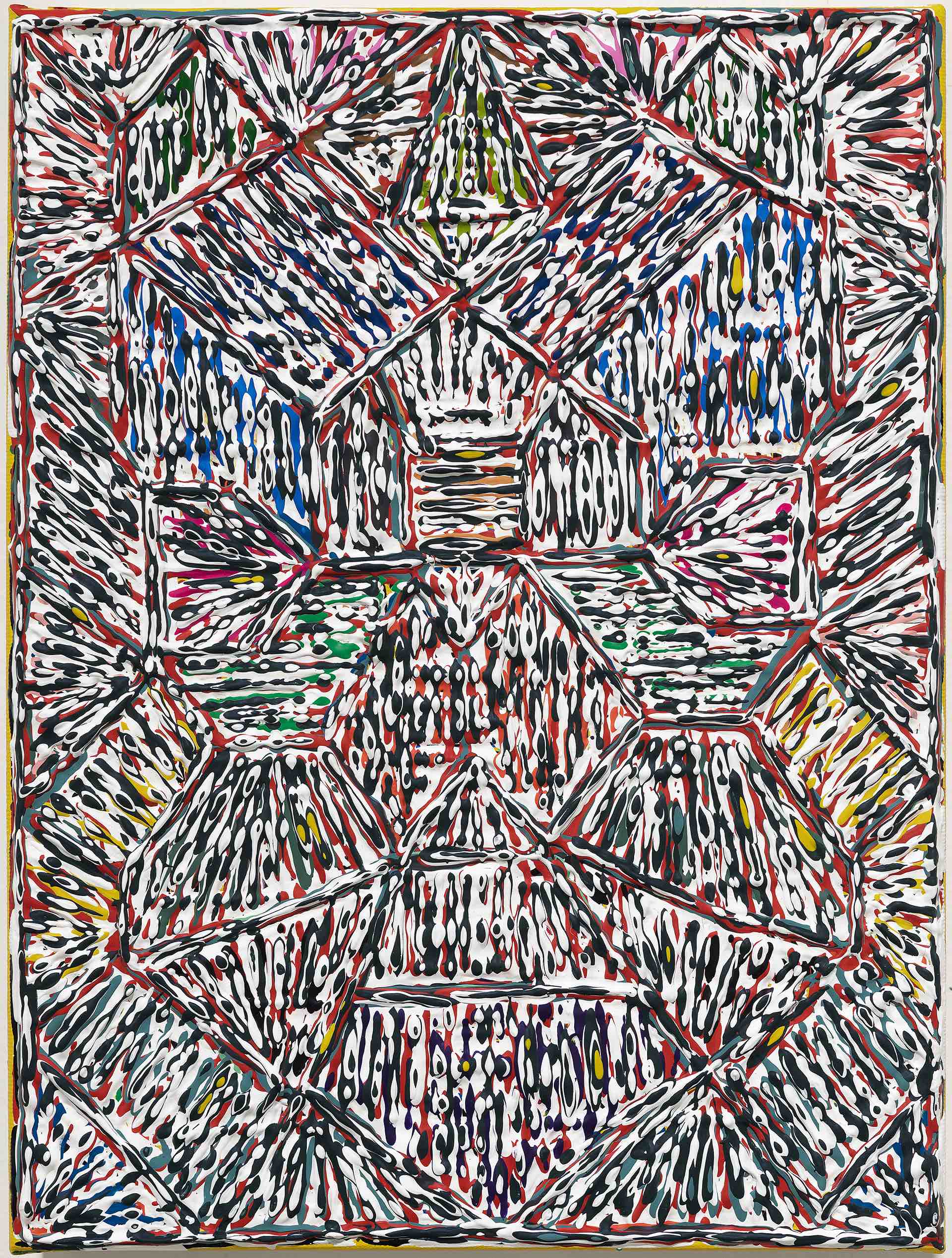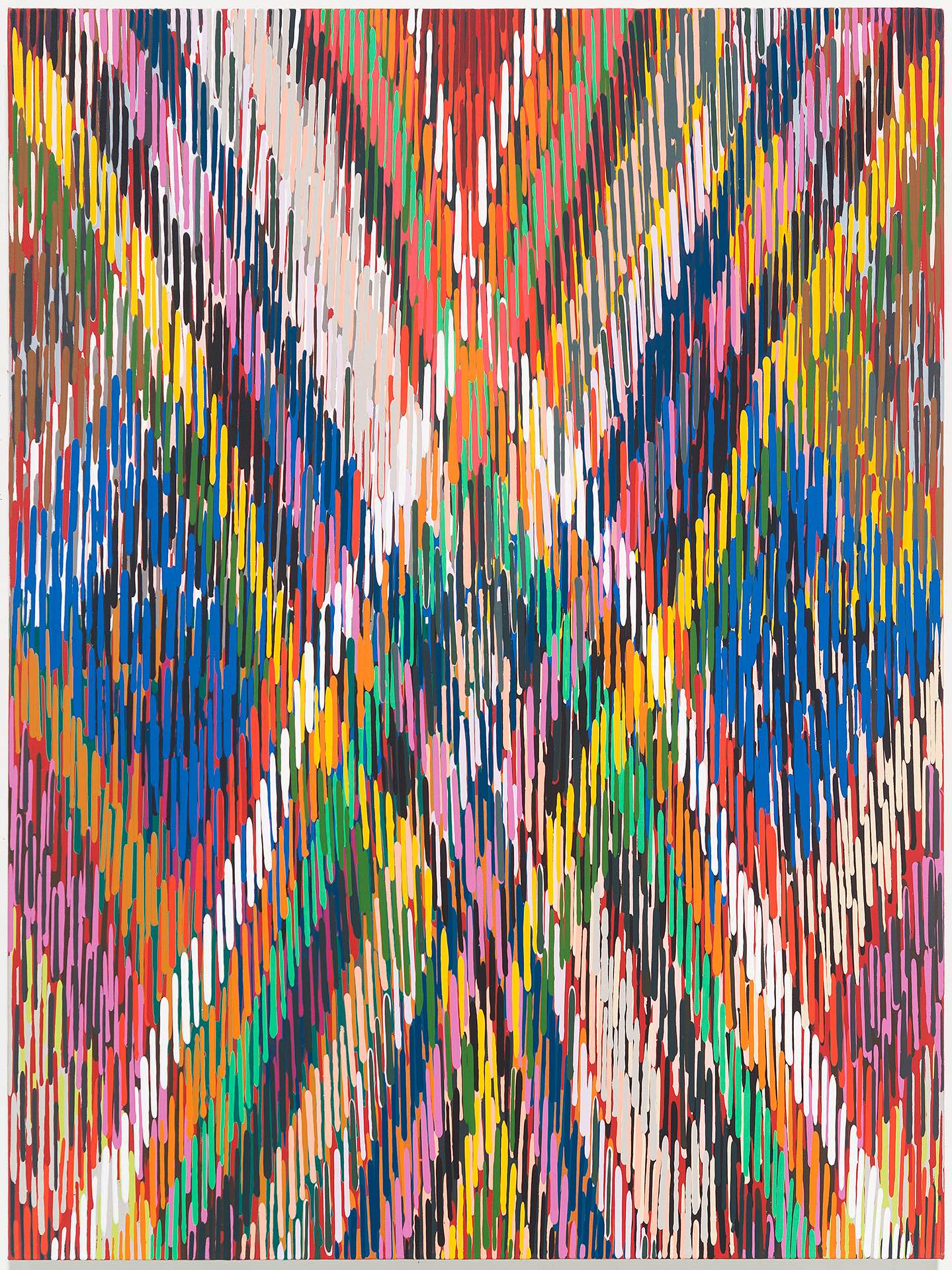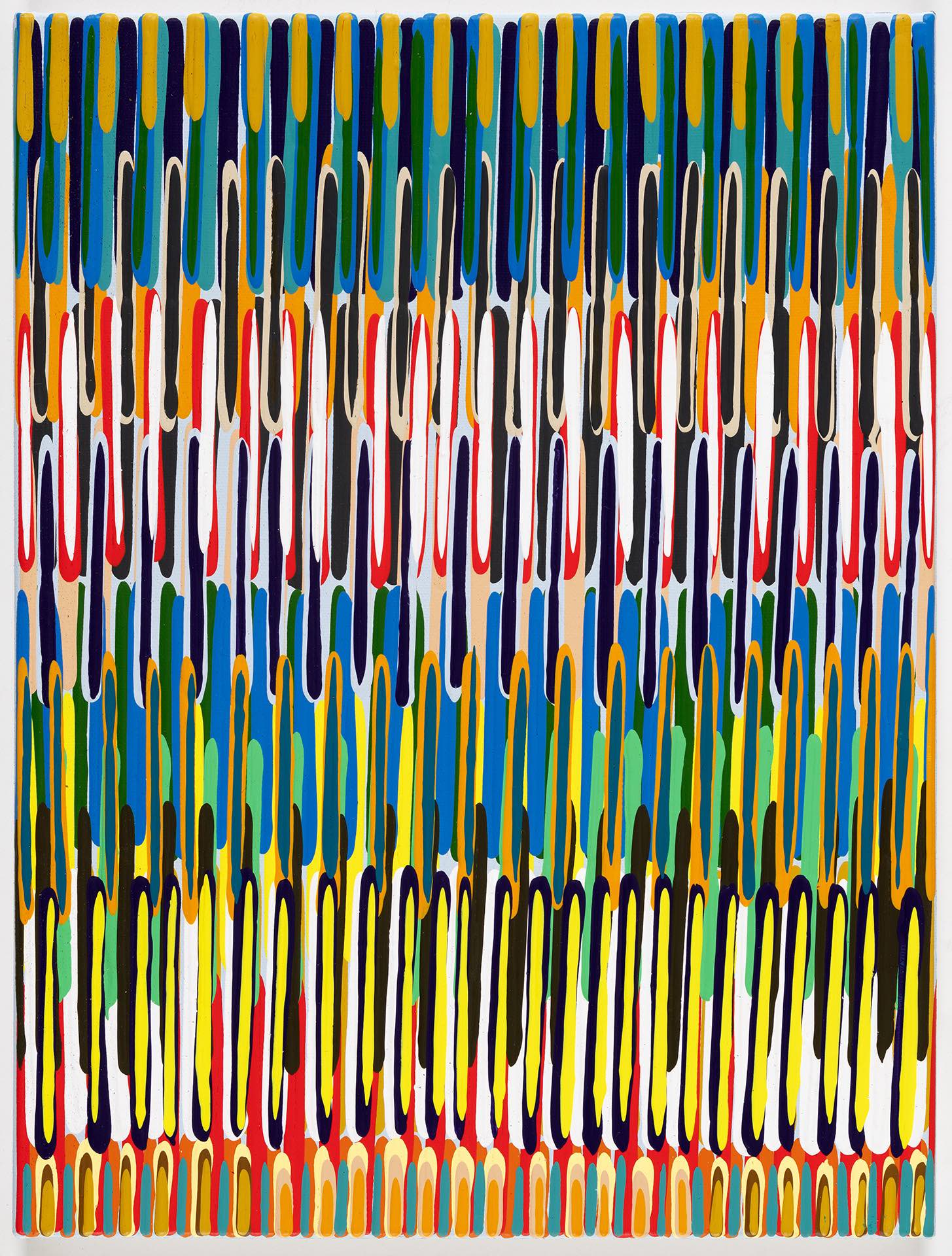
Marcus Cain has a traditional fine arts education, but over the past 20 years, he has been making woven, abstracted color field paintings. It began on a whim. One day while in his studio working on a figure painting, Cain turned the brush around and began to use the backend to create deep grooves along strains of color. Excited by the result, he began to play with color and texture, building up the paint more and more over time until his work resembled patterned cords crisscrossing across a two-dimensional plane, not unlike the surface of a knotted rug. “There’s something about the freedom of making this kind of mark that wasn’t about controlling the movement of the brush,” Cain said.
The paintings reward close examination. Depending on your distance from the canvas and the conditions in the room, your sense of the three-dimensionality of the oil paint can completely change. “It’s a fairly active visual field as you move across the painting from left to right,” says Cain. “There might be a way in which the pattern or the lines compress or expand, and depending on how the light is, you may be more or less aware of the texture.” A single work, then, contains several paintings at once, each layer of the painting a new vision for the viewer to unravel.




